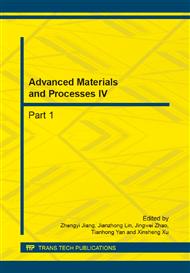p.1166
p.1174
p.1179
p.1187
p.1191
p.1196
p.1202
p.1206
p.1213
Modal Analysis of High-Order Elliptical Gears
Abstract:
Modal is the natural vibration characteristic of mechanical structures, and each modal has its specific natural frequency, damp radio and modal shape. Modal of vibration is the natural and total character of elastic structures. By modal analysis, the structure’s characters of different principal modal within a impressionable frequency range can be understanded, and is an important method in terms of structure’s dynamic design and machinery fault diagnosis. It provides basis for vibrating characteristics analysis, vibrating fault diagnosis of the systems, or forecasting and analyzing the dynamic characteristics of noncircular gear.
Info:
Periodical:
Pages:
1191-1195
Citation:
Online since:
September 2014
Authors:
Keywords:
Price:
Сopyright:
© 2014 Trans Tech Publications Ltd. All Rights Reserved
Share:
Citation:


